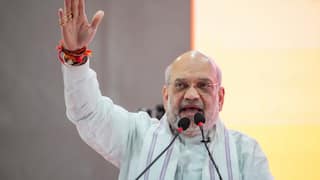Explorer
Advertisement
GDP Advance Estimates: Govt Pegs India's Economic Growth At 5% For FY-20 Against 6.8% In FY-19
According to the data released by the Central Statistical Office (CSO), the GDP is pegged to grow at 5 per cent in Financial Year (FY) - 2020, compared to the growth rate of 6.8 per cent in the same fiscal, last year.

RBI too pegged India's economic growth forecast down to 5 per cent in December 2019. (Representative Image/ Getty)
New Delhi: Amid the ongoing economic slowdown, the government of India on Tuesday released its first advance estimates of the gross domestic product (GDP) numbers for 2019-2020 fiscal. According to the data released by the Central Statistical Office (CSO), the GDP is pegged to grow at 5 per cent in Financial Year (FY) - 2020, compared to the growth rate of 6.8 per cent in the same fiscal, last year. The first advance estimate of FY20 gross value added (GVA) growth stood at 4.9 per cent.
Country's growth rate have already been cut by the Reserve Bank of India (RBI), recently. With growth decelerating, the Reserve Bank of India (RBI), at its December monetary policy review, pegged India's economic growth forecast down to 5 per cent. Even the global ratings agency Moody’s slashed the economic growth forecast to 5.6 per cent for 2019.
According to US-based private equity firm Blackstone, this year the Modi government is likely to continue business-friendly growth reforms, and the Indian economy is likely to grow at 6 per cent, while the markets could rise by up to 20 per cent.
The advance estimates are compiled using the Benchmark-Indicator method where sector-wise estimates are obtained by extrapolation of indicators like the Index of Industrial Production (IIP) in the first seven months of the fiscal, financial performance of the listed private companies up to the quarter ending September.
It is the first advance estimates of crop production, accounts of Central and state governments, indicators of deposits of credits, passenger and freight earnings of the railways, civil aviation and ports, and sales of commercial vehicles, among others that are available for the first eight months of the fiscal.
With the introduction of the Goods and Services Tax (GST) from July 1, 2017, and consequent changes in the tax structure, the total tax revenue used for GDP compilation includes non-GST revenue and GST revenue.
India's core sector contracted for the fourth consecutive month in November but the pace of contraction slowed to 1.5 per cent from 5.8 per cent in October led by growth in output of fertilizer, cement and refinery products, raising expectations of industrial production moving into the positive territory.
The eight infrastructure industries grew 0 per cent in April-November as compared to 5.1 per cent in the April-November period of 2018. Industrial production contracted for the third month running in October when it shrunk to 3.8 per cent.
On Monday, Prime Minister Narendra Modi met India's top 10 business leaders to brainstormed on reviving the economy and business sentiments, creating jobs and pushing growth.
The over two-hour meeting discussed the current economic scenario and measures needed to boost growth, consumption, employment, and reviving economy, sentiments and industrial growth from the slowdown.
India's GDP growth, for the three months ending September 2019 (Q2FY20), fell to 4.5 per cent, down from 5.0 per cent in the previous three months and 7 per cent for the corresponding period of 2018 as consumer spending and private investment weakened further and a global slowdown impacted exports growth.
This was the lowest reading since 4.3 per cent recorded for the January-March quarter of 2013. With this reading, India's economic growth fell for the sixth straight quarter. The development comes days ahead of Finance Minister Nirmala Sitharaman's Budget 2020 presentation in February.
(With inputs from IANS)
Follow Business News on ABP Live for more latest stories and trending topics. Watch breaking news and top headlines online on ABP News LIVE TV
View More
Advertisement
Trending News
Advertisement
Advertisement
Top Headlines
Cities
India
India
India
Advertisement






































